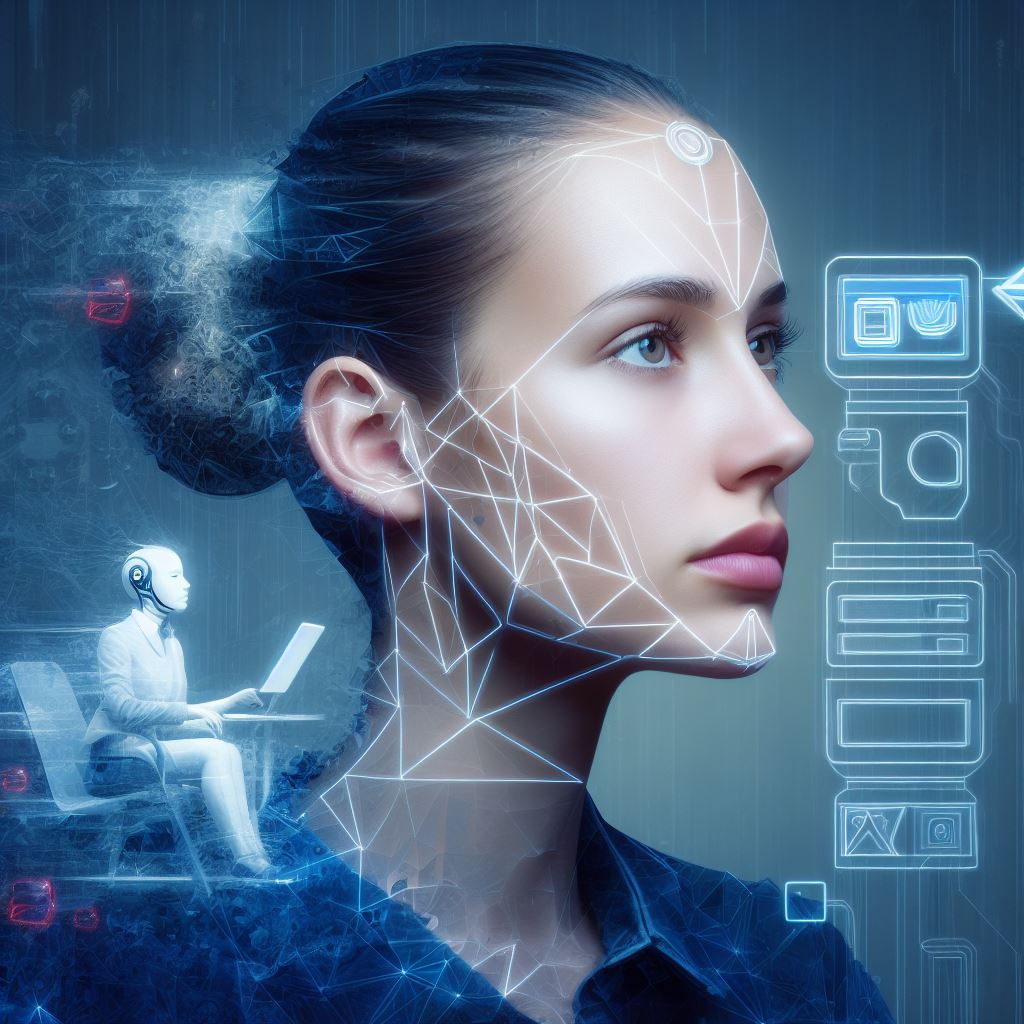Introduction
The impact of technology on waiting jobs in the US is a topic of great significance and relevance in today’s world.
With advancements in technology, the way businesses operate and serve their customers has been drastically transformed.
This has had a direct influence on jobs in various industries, including the waiting or service sector.
Significance of the topic and why it is relevant for discussion
The significance of this topic lies in the fact that technology has the power to automate and streamline processes that were previously done manually by human workers.
This can lead to the elimination or reduction of waiting jobs as machines and AI take over tasks that were once performed by humans.
Understanding the impact of technology on waiting jobs is crucial for individuals working in this field, as it can help them adapt and prepare for the changes that lie ahead.
Additionally, the topic is relevant for broader discussions on the future of work and the potential consequences of technological advancements.
It raises important questions about the role of humans in an increasingly automated world and highlights the need for skill development and job creation in emerging industries.
By exploring the impact of technology on waiting jobs, we can gain insights into the larger picture of how technology is shaping the job market and economy as a whole.
In the following sections, we will delve deeper into the various aspects of this topic, examining specific cases and examples of how technology has affected waiting jobs in the US.
Through this analysis, we aim to gain a comprehensive understanding of the consequences and implications of technological advancements on this particular sector.
Stay tuned for an in-depth exploration of the impact of technology on waiting jobs in the US.
Definition of waiting jobs
In today’s blog section, we will dive into the topic of the impact of technology on waiting jobs in the US.
Waiting jobs refer to occupations where individuals are responsible for waiting on customers or assisting them in various service-related settings.
These jobs require individuals to be patient, customer-oriented, and efficient.
Examples of waiting jobs include waiters/waitresses, receptionists, customer service representatives, and call center operators.
Characteristics and common tasks associated with waiting jobs
Waiting jobs encompass a range of characteristics and common tasks.
Firstly, these jobs often require individuals to interact directly with customers, providing them with a positive experience and meeting their needs.
This can involve taking orders, answering inquiries, and providing recommendations or information.
Secondly, waiting jobs also often involve managing and organizing multiple tasks simultaneously, such as handling payments, processing orders, scheduling appointments, or managing customer complaints.
Transform Your Career Today
Unlock a personalized career strategy that drives real results. Get tailored advice and a roadmap designed just for you.
Start NowFinally, individuals in waiting jobs must possess good communication skills, as they need to convey information clearly and effectively to customers.
The significance of waiting jobs in the US economy
The significance of waiting jobs in the US economy is profound, constituting a substantial segment of the service sector, a major driver of economic growth.
These roles act as crucial entry points into the workforce, offering valuable experience and flexible working hours.
Moreover, waiting jobs play a pivotal role in customer satisfaction and retention, with the quality of interaction influencing individuals’ decisions to revisit establishments.
However, the rapid integration of technology is reshaping these roles.
Self-service options and automation are replacing manual tasks, such as self-ordering kiosks in restaurants and automated call systems in customer service.
While technology brings efficiency and cost benefits, it poses challenges, particularly the potential loss of employment opportunities.
The skills required for waiting jobs may need to evolve, requiring individuals to acquire technological proficiency or focus on services that machines cannot replicate.
Adapting to these changes requires continuous learning and upskilling by individuals, supported by employers providing training and policymakers offering relevant programs.
Collaboration among stakeholders is crucial to navigating the evolving landscape of waiting jobs, ensuring their sustained relevance and value in the face of technological disruption.
Read: Skills Every American Waitress Should Master
Technological advancements in the service industry
Technology has made significant advancements in various sectors, including the service industry.
These advancements have revolutionized traditional jobs and had a profound impact on the overall efficiency and customer experience.
Let’s explore some of the key technological advancements that have emerged in the service industry:
Automation
One of the most significant advancements is the automation of routine tasks.
This includes automated check-in systems at hotels and self-checkout kiosks at supermarkets.
Automation has increased efficiency and reduced the waiting time for customers.
Mobile apps
The introduction of mobile apps in the service industry has transformed the way customers interact with businesses.
Apps allow customers to book appointments, make reservations, and order products/services conveniently from their smartphones.
This has significantly reduced waiting times and improved customer satisfaction.
Transform Your Career Today
Unlock a personalized career strategy that drives real results. Get tailored advice and a roadmap designed just for you.
Start NowSocial media integration
Many businesses now use social media platforms to communicate with customers and offer support.
Customers can easily reach out to companies through social media channels, eliminating the need for long wait times on phone calls or emails.
Virtual queuing
Virtual queuing systems enable customers to join a queue remotely using their smartphones.
They receive real-time updates and notifications about their waiting time, allowing them to engage in other activities or run errands while waiting for their turn.
Online appointment scheduling
Online appointment scheduling systems have become widely adopted by service-based businesses such as healthcare providers, salons, and repair services.
Customers can book appointments online, select time slots that suit them, and receive reminders.
This eliminates the need for customers to wait in long queues or make phone calls.
Artificial intelligence
AI-powered chatbots have become increasingly popular in the service industry.
These chatbots provide instant responses to customer queries and assist in tasks such as booking reservations, obtaining information, or troubleshooting issues.
They improve response times and reduce waiting times for customers.
Data Analytics
Businesses now have access to advanced data analytics tools that help them analyze customer behavior and preferences.
These insights enable businesses to streamline their operations, anticipate customer demand, and allocate resources more effectively.
This, in turn, reduces waiting times and improves overall efficiency.
Self-service options
Many service industries now offer self-service options to customers.
For example, self-check-in at airports, self-ordering kiosks at restaurants, or self-checkout registers at stores.
These options empower customers to complete their tasks independently, eliminating the need for waiting in queues.
Real-time tracking
Several service industries have implemented real-time tracking systems to keep customers informed about their orders or services.
This includes package tracking for deliveries, live updates on transportation and logistics, and tracking the progress of repairs or installations.
Real-time tracking reduces uncertainty and waiting times for customers.
Internet of Things (IoT)
IoT technology has enabled better coordination and communication between various service industry components.
Transform Your Career Today
Unlock a personalized career strategy that drives real results. Get tailored advice and a roadmap designed just for you.
Start NowFor instance, in healthcare, IoT devices can transmit patient data in real time to doctors, reducing waiting times and enabling faster diagnosis and treatment.
The above examples illustrate how technology has transformed the service industry.
These technological advancements have reduced waiting times, improved overall efficiency, and enhanced the customer experience.
As technology continues to evolve, we can expect further innovations that will revolutionize waiting jobs in the US.
Read: Tackling Challenges: Life Behind the US Restaurant Tables

Automation and self-service systems
The service industry has seen a growing trend of automation and self-service systems in recent years.
These systems aim to streamline processes and reduce the need for human intervention.
However, their impact on waiting jobs has been significant.
In various sectors of the service industry, such as fast food chains and retail stores, automation and self-service systems have become increasingly common.
Customers now have the option to place their orders through touchscreens or kiosks, eliminating the need for traditional order-taking roles.
Examine how these systems have affected waiting for jobs in terms of job availability and job responsibilities
This shift has had both positive and negative implications for waiting jobs.
On one hand, it has led to a decrease in job availability for certain positions that were traditionally responsible for taking orders or serving customers.
With automation taking over these tasks, fewer employees are needed to perform these roles.
Additionally, self-service systems have also changed the dynamics of job responsibilities.
In some instances, employees who were previously solely responsible for taking orders and serving customers now find themselves performing additional tasks, such as monitoring and troubleshooting the automated systems.
Potential benefits and drawbacks of automation in the context of waiting jobs
However, there are also potential benefits to automation in the context of waiting jobs.
For example, self-service systems allow for faster service, as customers are able to place their orders and complete transactions without the need for human interaction.
This can lead to increased efficiency and shorter wait times, improving overall customer satisfaction.
Furthermore, automation can free up human workers to focus on other aspects of the service industry.
For instance, employees who were previously occupied with taking orders can now spend more time engaging with customers, providing personalized recommendations, and offering assistance where needed.
Transform Your Career Today
Unlock a personalized career strategy that drives real results. Get tailored advice and a roadmap designed just for you.
Start NowDespite these potential benefits, there are also drawbacks to automation in waiting jobs.
The implementation of self-service systems can lead to job loss and unemployment for individuals who were dependent on these roles for income.
This can result in financial difficulties and increased competition for the remaining job opportunities.
Moreover, there is concern that automation may lead to a loss of human connection and personal touch in the service industry.
While self-service systems offer convenience, some customers still prefer the interaction and engagement that comes with having a human server or cashier.
Therefore, automation and self-service systems have had a significant impact on waiting jobs in the US.
They have reduced job availability and changed the responsibilities of those working in the service industry.
While there are potential benefits such as increased efficiency, there are also drawbacks such as job loss and a decrease in personalized customer experience.
It is crucial to carefully consider and strike a balance between automation and maintaining the human element in the service industry.
Read: The Role of Tips: US Waiters’ Income Explained
The role of AI in customer service
Artificial Intelligence (AI) has been increasingly utilized in customer service roles, revolutionizing the way businesses handle customer inquiries and provide assistance.
This advancement in technology has undoubtedly impacted waiting jobs and the skills required in customer service.
Investigating the Increasing Use of AI in Customer Service
AI is being deployed in customer service departments across various industries as companies strive to enhance efficiency and deliver better customer experiences.
Traditional customer service methods are often time-consuming and require significant human intervention, resulting in longer waiting times for customers.
However, with the advent of AI, businesses now have the ability to automate certain processes and streamline customer interactions.
AI-powered chatbots and virtual assistants are gaining popularity as they offer immediate responses and round-the-clock availability, reducing the need for customers to wait for human assistance.
AI Handling Customer Inquiries and Providing Assistance
AI is being utilized to handle customer inquiries through chatbot systems that can answer frequently asked questions, provide product recommendations, and assist with troubleshooting.
These chatbots are built on advanced algorithms and machine learning capabilities, enabling them to understand customer queries and provide accurate and personalized responses.
Furthermore, AI-powered virtual assistants are equipped with natural language processing abilities, enabling them to engage in conversations with customers and address complex inquiries.
These virtual assistants can simulate human-like interactions, creating a more personalized and interactive experience for customers.
Transform Your Career Today
Unlock a personalized career strategy that drives real results. Get tailored advice and a roadmap designed just for you.
Start NowExploring the Effects on Waiting Jobs and Required Skills
The introduction of AI in customer service has certainly impacted waiting jobs.
As more businesses adopt AI-powered solutions, the demand for human representatives to handle customer inquiries has decreased.
This leads to a potential reduction in waiting jobs.
However, it is important to note that AI cannot completely replace human interaction in customer service.
Certain situations and inquiries may still require the expertise, empathy, and problem-solving skills that only humans can provide.
Therefore, waiting jobs may evolve to focus more on complex queries and building genuine connections with customers.
With the rise of AI in customer service, the skillset required in this field is also changing.
While technical proficiency remains important, customer service representatives need to adapt and develop skills in utilizing AI tools effectively.
This includes understanding how AI algorithms work, managing customer interactions with AI systems, and seamlessly transitioning between human and AI support.
As AI continues to shape the customer service landscape, the impact on waiting jobs is evident.
While certain roles may undergo transformations or diminish, there will still be a need for human intervention and specialized skills in customer service.
The efficient utilization of AI and the cultivation of new skills will be crucial to meet the evolving demands of customers in a technology-driven world.
Read: How to Start as a Waitress in the USA: Top Tips
Job transformation and skill requirements
The impact of technology has drastically transformed waiting jobs in the US.
Technology integration has revolutionized the way these jobs are performed and has resulted in evolving skill requirements for individuals working in these positions.
1. Transformation of waiting jobs
- Technology has automated certain tasks in waiting jobs, reducing the need for manual labor.
- Automated systems have replaced human cashiers in many industries, affecting job opportunities.
- Self-checkout machines and automated kiosks have become prevalent, reducing the need for human assistance.
2. Evolving skill requirements
- Technology proficiency has become essential for individuals working in waiting jobs.
- Employees need to possess the ability to handle automated systems and troubleshoot technical issues.
- Basic computer literacy has become a mandatory requirement for waiting jobs in various industries.
- Cybersecurity awareness has become crucial to protect customer data and prevent cyber threats.
3. Importance of adaptability and continuous learning
- Adaptability is crucial for individuals working in waiting jobs due to rapid technological advancements.
- Employees must constantly update their skills to keep up with changing technologies.
- Continuous learning through online courses or workshops helps individuals stay relevant in their field.
- Flexible and open-minded individuals are better equipped to handle the integration of technology in their jobs.
4. Upskilling and reskilling opportunities
- Employers should provide opportunities for employees to upskill and adapt to technological changes.
- Training programs can help employees develop new competencies required for their evolving roles.
- Online resources and e-learning platforms offer convenient options for individuals to enhance their skills.
- Government initiatives can support retraining programs to aid employees in transitioning to new roles.
5. In-demand skills for waiting jobs
- Proficiency in operating various types of automated systems, such as self-checkout machines or ticketing kiosks.
- Customer service skills are still highly valued, despite the integration of technology.
- Problem-solving abilities to handle technical issues that may arise with automated systems.
- An understanding of data security measures to protect customer information and prevent cybersecurity breaches.
Most importantly, the impact of technology on waiting jobs in the US has resulted in a transformation of these roles and changed the skill requirements for individuals in such positions.
Adaptability, continuous learning, and upskilling are crucial in order to thrive in the rapidly evolving technological landscape.
Gain More Insights: Creating a Customer-First Culture: Tips for U.S. Companies
The Future of Waiting Jobs in the US
In this section, we will discuss the potential future trends and developments in waiting jobs as technology continues to advance.
We will also examine the likelihood of further job automation and the potential implications for individuals in waiting jobs.
Transform Your Career Today
Unlock a personalized career strategy that drives real results. Get tailored advice and a roadmap designed just for you.
Start NowFinally, we will suggest possible strategies for individuals in waiting jobs to adapt and thrive in a changing job market.
Potential Future Trends and Developments
- Introduction of automation technology in various waiting jobs may increase efficiency and reduce human error.
- Advancements in artificial intelligence could lead to the development of sophisticated customer service robots.
- Virtual reality technology may be utilized to create immersive waiting experiences for customers.
- Integration of mobile apps and online platforms can streamline the process of waiting and decrease waiting times.
- Waiting jobs may evolve to focus more on providing personalized services and enhancing customer experience.
Likelihood of Job Automation and Potential Implications
- Further automation of waiting jobs is highly likely, particularly in industries already experiencing technological advancements.
- Job automation may result in a reduction in the number of waiting jobs available, leading to potential unemployment.
- Individuals in waiting jobs may need to acquire new skills to remain employable in an automated job market.
- Automation may result in a shift in job responsibilities, requiring workers to adapt to new roles or industries.
- The potential implications of job automation for individuals in waiting jobs highlight the need for proactive measures.
Possible Strategies for Adapting and Thriving
- Continuous learning and upskilling can help individuals in waiting jobs stay updated with technological advancements.
- Developing interpersonal skills and emotional intelligence can set individuals apart in a technology-driven job market.
- Exploring opportunities for career transitions into fields less likely to be automated can provide job security.
- Networking and building professional connections can open doors to new job opportunities outside traditional waiting roles.
- Entrepreneurship and freelancing can be alternative career paths for individuals seeking independence and flexibility.
In essence, the future of waiting jobs in the US is likely to be influenced by technology and automation.
While job automation poses potential challenges, individuals in waiting jobs can adapt and thrive by embracing new skills, exploring alternative career paths, and staying ahead of technological advancements.
By proactively preparing for the changing job market, individuals in waiting jobs can secure their future in an increasingly automated world.
Conclusion
The impact of technology on waiting jobs in the US has been significant.
The introduction of automated systems and self-service technologies has made many waiting jobs obsolete.
The use of technology in the service industry has reduced the need for human interaction and has led to the loss of job opportunities for individuals in waiting roles.
It is evident that technological advancements have improved efficiency and convenience for customers, but at the same time, it has had a negative impact on employment in the service sector.
For individuals in waiting jobs and the service industry as a whole, it is important to adapt to these changes and acquire new skills to remain relevant in the job market.
Upskilling and retraining in areas that are less likely to be automated can help individuals secure better employment opportunities.
Furthermore, individuals in waiting jobs should consider transitioning into roles that require more critical thinking, problem-solving, and customer experience management.
Businesses in the service industry should also invest in training and development programs to help their employees upskill and adapt to technological changes.
While technology has disrupted waiting jobs in the US, individuals and businesses can overcome these challenges by embracing new skills and adapting to changing market demands.
[E-Books for Sale]
The Big Book of 500 High-Paying Jobs in America: Unlock Your Earning Potential
$19.99 • 500 High-Paying Jobs • 330 pages
Explore 500 high-paying jobs in America and learn how to boost your career, earn more, and achieve success!
See All 500 High-Paying Jobs of this E-Book
1001 Professions Without a Degree: High-Paying American Jobs You Can Start Now
$19.99 • 1001 Professions Without a Degree • 174 pages
Discover 1001 high-paying jobs without a degree! Unlock career tips, skills, and success strategies for just $19.99!




